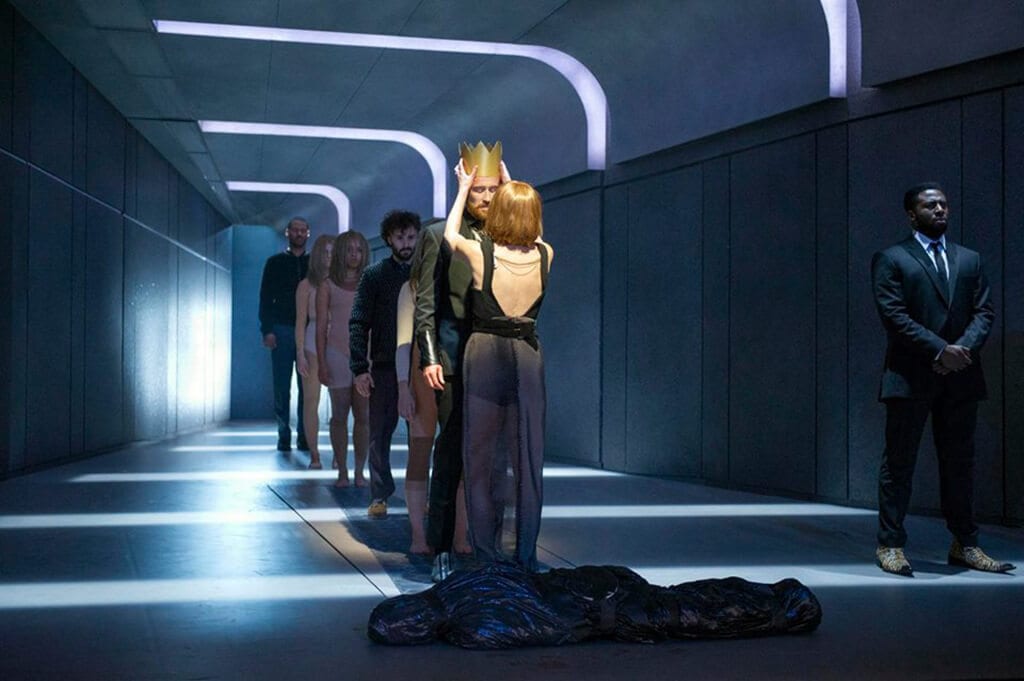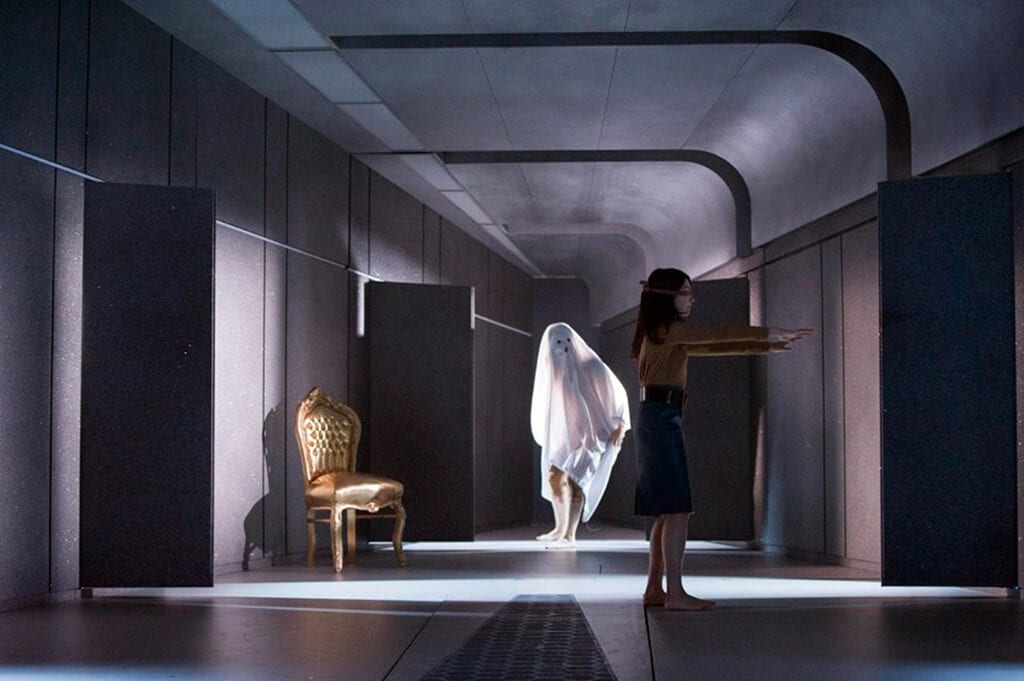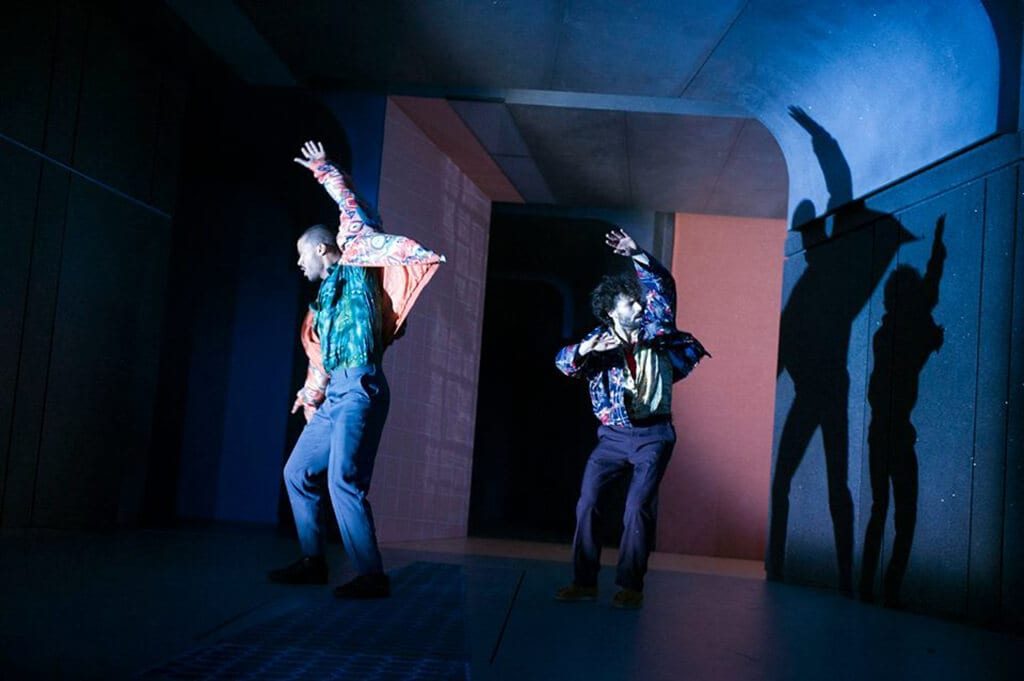Carrie Cracknell & Lucy Guerin morphs Shakespeare’s Macbeth into a show similar, in parts, to the original play but with the action reduced to choreographed movements. It is a complete contrast to the conventional Macbeth that we are familiar with.
As we enter, we are greeted with a sight of simple yet effective staging. Designed to give a certain perspective, the set somehow manipulates the space into looking as if it is a long continuous tunnel. Simple greys and industrial lights give the tunnels a secret-service-military-base-camp feel. Of course, these are complemented by the military style uniform worn by the soldiers of war and the smart suits the high ranking officers and agents are dressed in.
Carrie Cracknell & Lucy Guerin flip and stylise the story of the Scottish general who encounters three strange women in the moorlands on his way home, who prophesies that he will be given the title Thane of Cawdor and thereafter become King of Scotland, into a semi-dance piece yet including all of the original text.
Wrapped in dark body bags, is what seems to be dead bodies. They bags are dragged on stage. The brutality and the way in which death is represented throughout the show contribute to Carrie Cracknell’s contemporary staging of the classic. She shows something similar to modern day warfare, almost mirroring what we see going on in everyday Syria and in Palestine.
In nude coloured leotrads are the three witches (Ana Beatriz Meireles, Jessie Oshodi and Clemmie Sveaas), again a contemporary style of dressing that is similar to the Kanye West x Adidas collaboration, reminds us of the time period, holding the attention of younger viewers. The three witches appear almost in every moment of the production, a bold choice by Cracknell and Lucy Guerin, symbolising the importance of the witches mentally for Macbeth. They go on and characterize Macbeth almost like a solider suffering from PTS, and by having the witches with him in every moment, we see and feel the tension he is facing and the madness in his mind.
The production is described as a dance piece, and there are moments in which the movement sequences are daring and objectified with clear intentions, however, there are also moments when dance seems unnecessary if not forced. Because of this, the audience loses out from the existing atmosphere. For example, the house-party scene looks more like an exhibition of dance, rather than movement to tell a story and express a meaning.
John Heffernan and Anna Maxwell Martin give a strong performance as Macbeth and Lady Macbeth; they did not explore the usual mother and son relationship that is usually seen with the conventional productions of Macbeth. Instead, they come across as a modern day couple with modern day struggles, keeping up appearances amongst friends and protecting one another. Martin’s vocal range is nothing but commendable. She speaks the word of Shakespeare but dresses it with a contemporary attitude that was relatable. Heffernan embodies the character of Macbeth so well that he carries the audience through his journey and makes them comfortable enough to follow him through.
Having said that, a couple of things rather take me away, if not force me out from the world that Cracknell and Guerin created. One of them is Merle Hensel’s choice of costume for some of the characters at times, especially for Macbeth’s huntsmen. Another is the chairs and some of the props used, they don’t seem to add much layer to the piece, and I fail to understand the meaning. Can’t it work without them?
The production can also achieve what it wants to achieve with less. The idea of modernising a Shakespearean play can sometimes cause Designers and Directors to forget the text and concentrate more on making their production ‘different’ and ‘something to talk about’ instead of actually telling the story. Two hours and no interval, it is definitely a lot of information to process.




